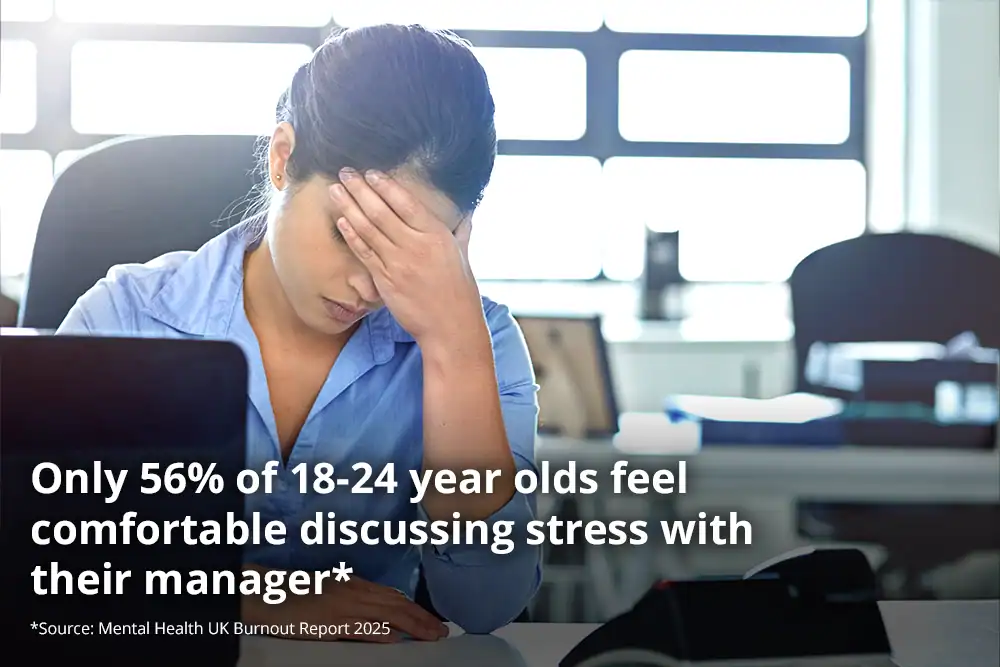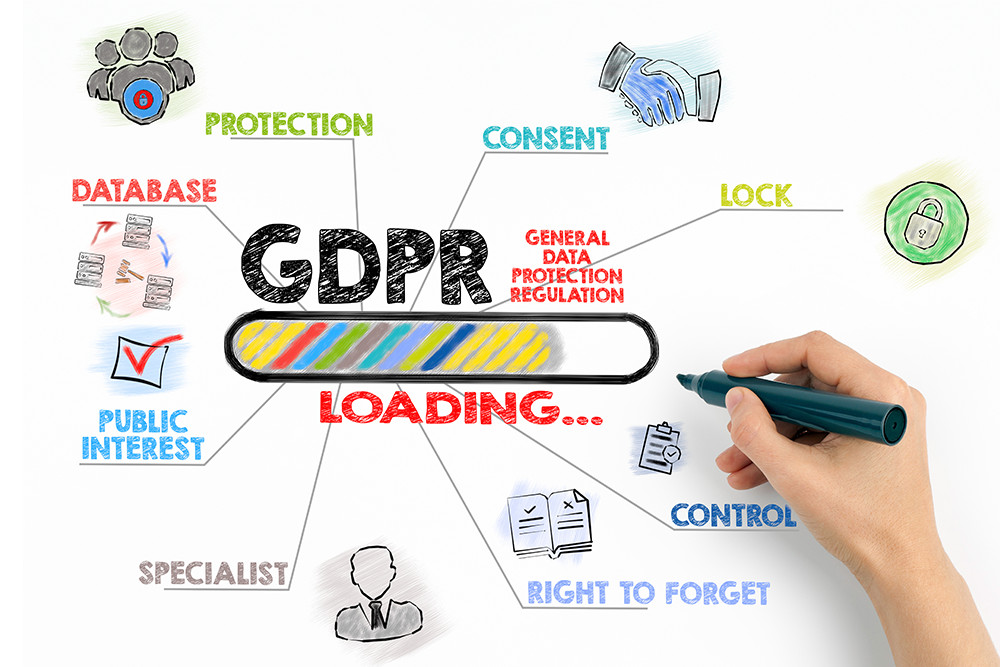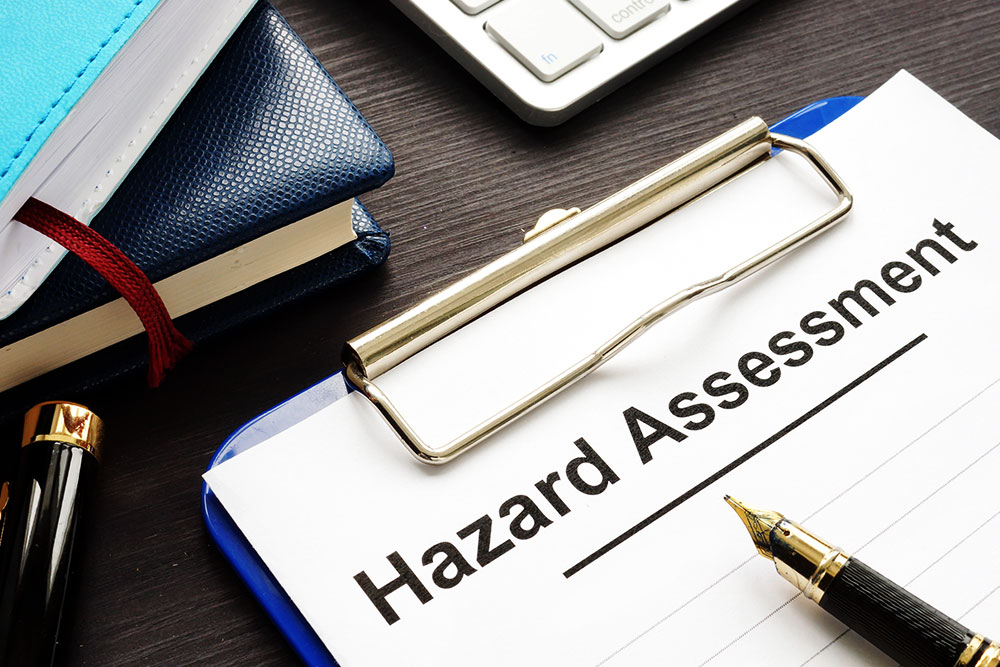
October 10 is World Mental Health Day 2025.
World Mental Health Day is an annual event that explores why so many of us struggle with our mental health and what we can do to improve it.
Each year has a different theme. This year, it’s access to mental health support in emergencies – something the world sadly needs more now than ever before in the 21st century.
However, poor mental health isn’t solely caused by crises. The reality is that stress, anxiety and burnout are now familiar issues for the average worker and the organisations that employ them.
This blog looks at how workplace mental health is deteriorating, and why raising awareness alone hasn’t helped the situation.
World Mental Health Day 2025: Key Takeaways
- Mental health is getting worse: Reports of stress, anxiety and depression have been rising for the past 10 years.
- Stigma is a huge barrier to support: Almost three-quarters of employees say they would not disclose a mental health condition to their employer, because of fear for their job security.
- The cost is staggering: Poor mental health caused 16.4 million lost working days in 2023/24 and costs UK employers an estimated £51 billion annually.
- Employers must act: Legal duties include carrying out stress risk assessments, but culture matters, too – training managers in mental health support is a key step.
A Snapshot of Workplace Mental Health in 2025
According to the CIPD’s Good Work Index 2025, one in four employees (25%) say their job negatively affects their mental health.
The same report shows that over the past year, 42% of employees experienced a mental health condition. The most common were:
- Anxiety (27%)
- Sleep problems (27%)
- Depression (15%)
Looking further back, long-term data from the Health and Safety Executive (HSE) paints a similar picture.
Up to the late 1990s, the rate of work-related stress, depression, and anxiety was broadly flat in Great Britain, only to start climbing in the years before the Covid-19 pandemic
By 2019/20, stress, depression and anxiety already accounted for more than half of all reported cases of work-related illness, affecting around 1.8% of the workforce.
By 2023/24, the HSE recorded a higher prevalence of 2.3% of the workforce – the equivalent of 2,290 cases per 100,000 workers. This rise shows that the problem has not only persisted but intensified since the pandemic.
Mental Health Awareness Training
Challenge stigma and offer employees practical support. This online Mental Health Awareness Training course explains how stress, anxiety and depression can develop, and shows employees how to support their own and others’ wellbeing – including recognising when professional help may be needed.
The Growing Generational Divide
Statistics also suggest that this problem hasn’t peaked. It’s likely to grow worse as younger generations make up a greater share of the workforce.
According to Mental Health UK’s Burnout Report 2025, 91% of adults experienced high or extreme levels of pressure or stress in the past year.
On its own, this figure should cause concern. But when you look at how this stress is affecting different age ranges, a more worrying trend emerges.
Over a third (35%) of workers aged between 18 and 24 needed time off for stress at some point in the last year.
This is more than three times the rate for workers over 55, where only 10% reported taking stress-related leave.
It’s clear that younger workers are struggling more, perhaps because they’re joining the workforce at such an uncertain time and don’t possess the confidence that comes with experience.
Younger workers also report being hit hardest by specific stressors. Those aged 18–24 were the most likely to say they:
- Regularly work unpaid overtime (48%)
- Take on extra hours to cope with the rising cost of living (46%)
- Feel isolated at work (44%)
These responses paint a mixed picture. Younger workers are grappling with both financial and social pressures, in contrast to older workers, who are more concerned with their careers.
For employees aged 25-34, high or increasing workloads (56%) and fears of redundancy or job security (45%) are the main sources of stress.
On the surface, these stressors are tied to external factors, such as lingering inflation, the impact of AI on the job market and the general sense of economic gloom in the UK currently. But how employers handle mental health is also having an impact.

Why Workers’ Mental Health Is Suffering
Despite years of campaigns and awareness, poor mental health continues to dominate workplace health reports.
One of the biggest obstacles remains stigma.
According to Action Mental Health, 73% of UK employees would be uncomfortable disclosing a mental health condition to their employer because they’re concerned it would affect their career prospects. This links directly to the concerns of workers in their mid-20s to early 30s, who report job security as one of their main sources of stress. For these workers, hiding their struggles is seen as a survival tactic.
For younger employees, it’s an absence of trust that keeps them silent. Mental Health UK’s Burnout Report 2025 found that barely more than half (56%) of 18–24-year-olds feel comfortable discussing stress with their manager.
Only one year earlier, this figure was 75%.
This collapse in trust may help explain why younger workers are more likely to report feelings of isolation. With many managed by older colleagues, bridging that gap can feel daunting without active support from employers.
But this support is needed. Employers have a duty to protect their employees’ health – including the responsibility to manage work-related stress.
If nearly three-quarters of workers feel reluctant to raise concerns, and half of younger workers feel unable to, that duty is either being mishandled or overlooked.

The Cost to Employers
The personal impact of poor mental health is hard to weigh. But in economic terms, we can put it into figures.
According to the HSE, work-related stress, depression and anxiety lost 16.4 million working days in 2023/24, with the average affected worker absent for 21.1 days. This is more than any other health condition.
The financial cost is equally stark.
Deloitte’s 2024 analysis shows that poor mental health costs UK employers around £51 billion every year.
The biggest share of this – around £24 billion – comes from presenteeism, when employees are physically present at work but struggle to perform because of stress, anxiety or depression. The rest is split between sickness absence and staff turnover.
And poor mental health isn’t just costing individual organisations; it’s holding back the economy as a whole.
Research by the Centre for Mental Health estimates that mental illness costs England alone around £300 billion annually. This includes:
- £110 billion in lost economic output
- £130 billion in human costs, such as reduced quality of life
- £60 billion in health and care costs
For employers, the message should be clear: failing to support mental health comes with a price tag. And as younger workers make up a larger share of the workforce (a group more likely to take time off when struggling), that cost is only likely to rise.
What Employers Can Do
You can’t end the ongoing cost-of-living crisis or eliminate economic uncertainty, but you do have a duty to support your employees in the workplace.
In practice, this means carrying out stress risk assessments, as you would for physical hazards. You identify potential stressors, understand their impact and put measures in place to reduce them.
Those measures won’t necessarily be complicated. The statistics show that employees struggle most when they can’t talk openly, so start there:
- Provide mental health training to all employees – make mental health a talking point and give employees strategies to support it.
- Train line managers to handle sensitive conversations – help those closest to employees recognise when they’re struggling and respond with empathy.
- Invest in mental health support – prove to employees that mental health is a priority, and you’re committed to help.
Appropriate Training
Although World Mental Health Day 2025 is spotlighting people in crisis, it’s also a reminder to look closer to home.
Ask yourself: Are you doing enough to help your employees and colleagues?
For some employers, the answer will be yes – stress risk assessments are in place, managers are trained and staff know where to turn for help. For others, there’s more you can do.
If you haven’t taken steps to support mental health at work, start with training. It gives employees the confidence to talk honestly about their struggles and managers the skills to listen and respond constructively.
All courses are delivered online, making them self-paced and scalable. Learners can slow down, revisit key sections and focus on what matters most to them. And everyone gains the same understanding and appreciation of mental health – the first step toward open conversations and better outcomes for your staff.





















